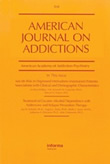|

|
American Journal on Addictions 2018;27(6):465-470. [doi: 10.1111/ajad.12784]
Aimee N.C. Campbell, PhD, MSW (Columbia University, GNY Node), Celestina Barbosa-Leiker, PhD (Washington State University, PN Node), Mary A. Hatch-Maillette, PhD (University of Washington, PN Node), Sarah Mennenga, PhD (New York University School of Medicine, GNY Node), Martina Pavlicova, PhD (Trustees of Columbia University, GNY Node), Jennifer Scodes (Columbia University, GNY Node), Tanya Saraiya (Adelphi University), Shannon Gwin Mitchell, PhD (Friends Research Institute, MA Node), John Rotrosen, MD (NYU School of Medicine) Patricia Novo, MPA, MPH (New York University School of Medicine, GNY Node), Edward V. Nunes, MD (Columbia University, GNY Node), Shelly F. Greenfield, MD, MPH (McLean Hospital, NEC Node).
This ancillary investigation of data from NIDA Clinical Trials Network protocol CTN-0051, a randomized, controlled trial comparing extended-release naltrexone to buprenorphine, examined baseline gender differences in individuals with opioid use disorder (OUD) receiving inpatient services. Participants (N=570) provided demographic, substance use, and psychiatric history information.
Women were significantly younger; more likely to identify as bisexual, live with a sexual partner, and be financially dependent on someone else; and less likely to be employed. Women also reported significantly greater psychiatric comorbidity and risk behaviors, and had shorter duration, but similar age of onset, of opioid use.
Conclusions: Findings underscore economic, psychiatric, and infection vulnerability among women with OUD, which may complicate treatment initiatiion, retention, and recovery. Gender-specific interventions focused on these areas of disparity for women with OUD should be considered, including integration of OUD care with treatment for co-occurring psychiatric disorders and trauma, couples-based risk reduction interventions which address relational dynamics, and interventions that address the unique needs of sexual minority women.
(Peer-reviewed article, PDF, English, 2018)
Document No: 1330, PMID: 30106494, PMCID: PMC6124662 (available 9/1/2019).
Submitted by Mary Hatch-Maillette, PN Node, 8/15/2018. |